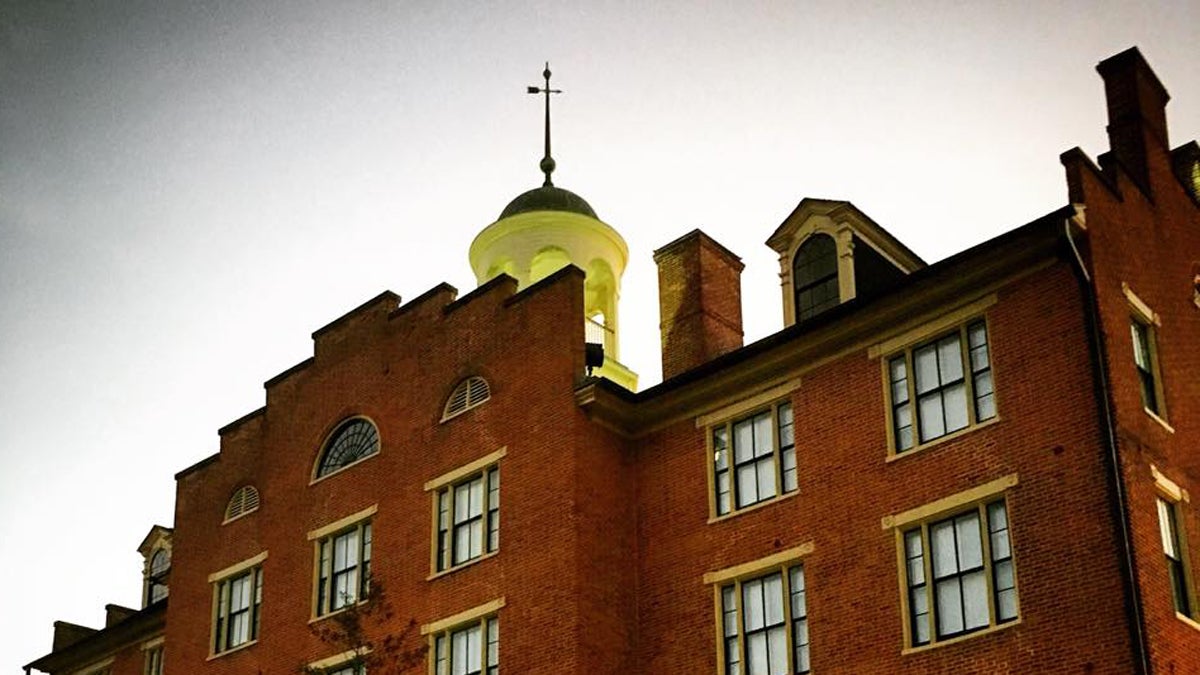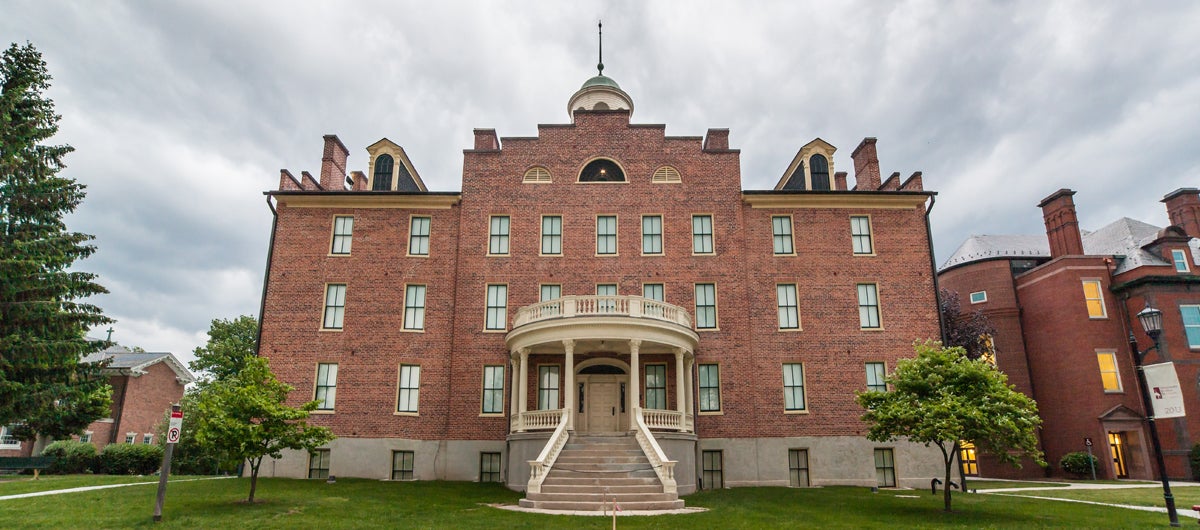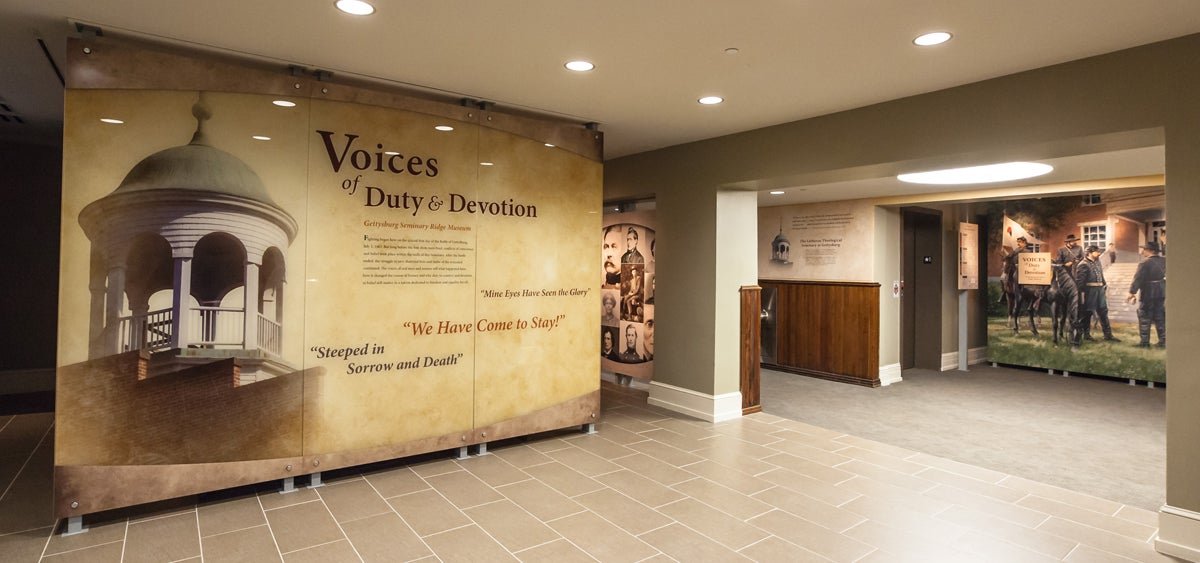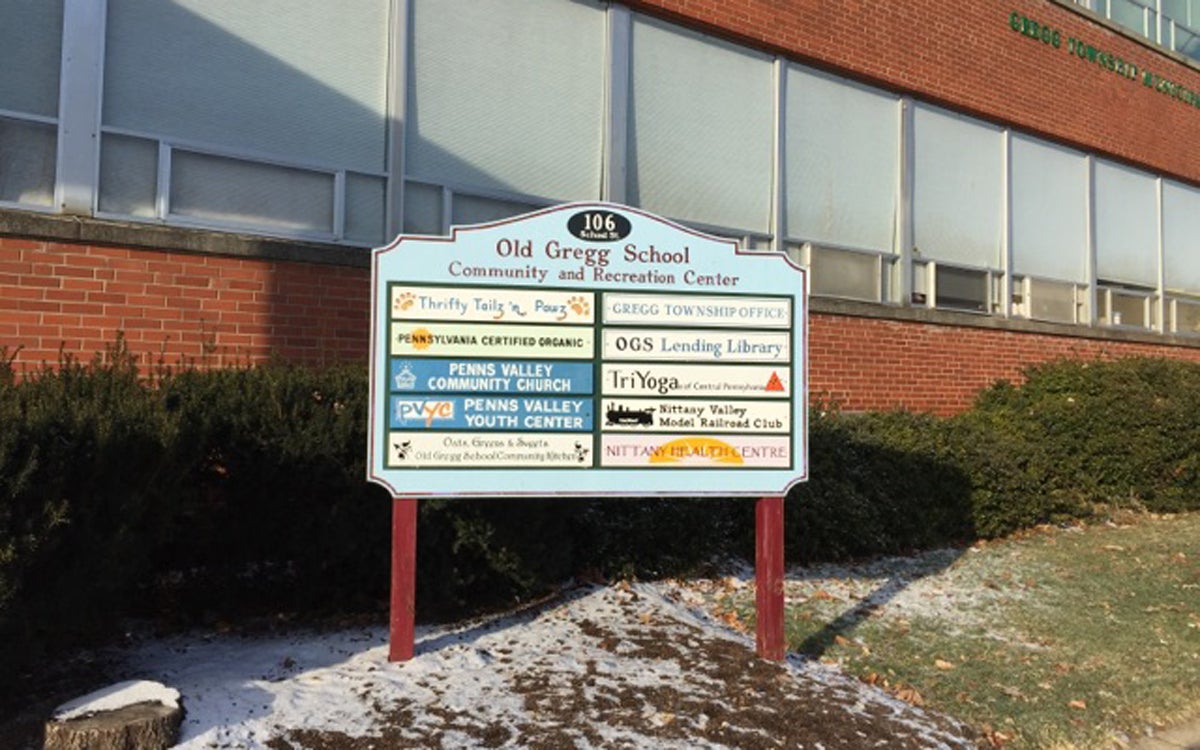Pennsylvania cities find creative new uses for old school buildings

The main building of the Seminary Ridge Museum in Gettysburg has served as a school and a war-time hospital. (Photos courtesy of Seminary Ridge Museum)
Shifting demographics, diminishing resources, and the costs of maintaining large and aging facilities have all contributed to the steady stream of school closures. Some have been saved and repurposed.
School communities throughout the state have gone through painful changes in recent years, as long-established school buildings have been closed and students sent to new locations. Shifting demographics, diminishing resources, and the costs of maintaining large and aging facilities have all contributed to the steady stream of school closures — even when those buildings had historic backgrounds and architectural importance.
Preservationists battled but failed to save William Penn High School, a nine-acre modernist complex in North Philadelphia designed by renowned architect Romaldo Giurgola. It was demolished in 2015 and replaced with a new Temple University athletic complex that opened last summer.
But another landmark, the Gothic-styled West Philadelphia High, built in 1912 by the city’s chief school architect, Henry deCourcy Richards, has escaped the wrecking ball. It is currently being rehabilitated as a 300-unit apartment building at a cost of $24 million.
Conversion into residential space is the most common fate of old school buildings in Pennsylvania, explained Patrick Grossi, advocacy director at the Preservation Alliance for Greater Philadelphia. “It makes sense if you think about how schools are laid out and the floor plan. If it had a gym or auditorium, it can become an amenity space for tenants. It’s a sensible path in making a project work.”
On the other hand, the wide halls and open stairways of older school buildings can be hurdles for developers, noted Mindy Crawford, executive director of Preservation Pennsylvania, the statewide nonprofit dedicated to protecting historic resources.
Preservation Pennsylvania began fighting the rising tide of vacant historic schools in 1998, when it was much easier for developers to find financial backing for new construction than it was for rehabilitation. “Our goal was to keep school buildings as schools, or at least avoid demolishing them,” Crawford said.
A few years later, the organization supported the concept of community-centered schools, which referred to keeping them in the neighborhoods where children could walk or bike to school. “But not every school was going to be saved or kept in the same location. Many were left vacant or demolished,” she said.
So the policy of Preservation Pennsylvania evolved. If the buildings could not remain as schools, then find a new use for them.
Most of the repurposed school buildings in the state were converted into housing, often for senior citizens, or professional offices. Schools were usually well built, Crawford said, and remained intact after they were closed.
Some developers have taken creative approaches to rehabbing schools, keeping aspects that define the character of the original building, and sometimes knocking down walls between classroom to make larger, more practical spaces. “In some of these cases, you still have a sense of the school,” Crawford said.
In Philadelphia, developers turned a parochial school into artists’ studios and a technical school into a commercial space with a rooftop garden bar. “Retrofitting these spaces into more contemporary uses is not insurmountable,” said Grossi of the Preservation Alliance.
Communities in other parts of Pennsylvania have come up with other successful ways to keep and transform beloved school buildings.
Seminary becomes a museum
In Gettysburg, a city with a great reverence for history, a former school has been repurposed as a museum that utilizes modern technology while preserving the building’s historic character.
The Lutheran Theological Seminary was founded in 1826 and its main building was constructed in Gettysburg in 1832. The south-central Pennsylvania city was chosen by the Lutheran movement for many of the same reasons the decisive Civil War battle was waged there: its location at the intersection of 10 roadways and its proximity to the Mason-Dixon Line. Seminary students were drawn from both the North and the South.
The original seminary building housed classrooms, offices, dormitories and a library during its first 60 years. In the fateful summer of 1863, the seminary building served as a strategic lookout and then as a field hospital for 700 casualties of the Battle of Gettysburg.
In the 1890s, the seminary added an administrative building, and the original building underwent a significant renovation into dorms. In the 1950s, new safety code regulations meant it would be cheaper to build a new dormitory than to update the old building. But when the seminary board voted to tear down the structure, the Lutheran community, preservationists and battle historians protested. The seminary made a deal to lease the property for $1 a year to the Adams County Historical Society for use as its headquarters.
 The 180-year-old building retains its historic features and still operates as a 21st-century educational institution. (Photos courtesy of Seminary Ridge Museum)
The 180-year-old building retains its historic features and still operates as a 21st-century educational institution. (Photos courtesy of Seminary Ridge Museum)
Major renovations toward making the historic building into a museum were made in 2012 and 2013. The $13 million project was funded through grants, private donations and historic tax credits, explained Peter Miele, director of education at the Seminary Ridge Museum.
“The cool thing about the museum is that when they were doing the renovation they kept a lot of the old woodwork and original features. When you walk through the building, you’re walking on the uneven, creaking floors that were laid in the 1830s. The doorways from 1895 are slanted in some spots from the building’s settling. They had to cut the doors to fit the frames. It was a real headache for the contractors. There’s not a straight edge in the building anymore.”
But those reminders of the building’s age “really add to the experience,” Miele said. “You’re learning what was going on in the building as a seminary, a field hospital, and an important place during the first days of the battle.”
More than 17,500 people visit the museum each year, where they hear “the very personal and intimate story that we share,” Miele said. The Seminary Ridge Museum explores social and cultural elements of the war, including how religion was used to both oppose and defend slavery; the African -American experience in south central Pennsylvania in the 19th century; and the medical side of the battle, as doctors learned about cleanliness and the causes of disease.
The renovations to the original building also made it possible for visitors to enter its cupola, from which Brigadier General John Buford watched advancing Confederate troops and determined the Union’s defensive strategy.
The rehabilitation of the180-year-old building included the installation of heating and cooling and lighting systems to protect the historic artifacts. The modern ductwork is hidden in the closets of the old dorm rooms in order “to maintain the integrity of the building,” Miele explained. A state-of-the-art sound system was added to provide the narrative as guests explored the exhibits.
“That’s my favorite part of this museum,” Miele said. “It has the modern aspects, including the multi-media presence you expect from a museum now, but you can still hear the floors creaking and see the antique wainscoting. It’s the best of both worlds.”
 The museum tells the story of the building and its pivotal role during the Civil War. (Photos courtesy of Seminary Ridge Museum)
The museum tells the story of the building and its pivotal role during the Civil War. (Photos courtesy of Seminary Ridge Museum)
“Quite a bit going on”
The town of Spring Mills, Centre County, saved what had been ruled an unneeded school building and transformed it into a bustling, multi-purpose community center.
In the 1920s, a two-story Georgian home in Gregg Township was converted into a schoolhouse. A gymnasium was built on an adjacent lot, and the two buildings were eventually joined. The last renovations to the school property were made in 1995.
In 2006, the school district determined that with declining enrollment, and the existence of newer facilities, it would close the Old Gregg School. Its 100 students were sent to neighboring elementary schools.
The Old Gregg School was transferred to the township, with the provision that if the district ever needed it, the property would revert back to the district. The parents of the displaced students, while upset about the redistricting, were instrumental in convincing the township to accept the property and turn the school building into a community hub.
A variety of non-profits now use the 26,000-square-foot Old Gregg School Community and Recreation Center, including an organization that collects food from supermarkets and local farmers for distribution to needy families. A thrift shop in the former school building directs its proceeds to animal rescue groups.
The for-profit tenants include an insurance company, a holistic health studio, a yoga studio, and a dance studio. Pennsylvania Certified Organic has 20 employees who train and certify farmers to produce crops using natural methods.
The township owns and operates the fitness center at the Old Gregg School, and converted the old locker room into the weights and fitness machine room. The school district still uses the building for basketball and volleyball practice because it doesn’t have enough of those facilities elsewhere.
The community playground at the Old Gregg School was rebuilt last summer, and the county Little League teams make use of the fields.
The school building is also used often by the Penns Valley Community Church, a model railroad club, a baton group, and a tax preparer. Craft fairs are held twice a year.
 The former school building in Spring Mills now houses for-profit businesses, nonprofit organizations, and community groups. (Photos courtesy of Old Gregg School)
The former school building in Spring Mills now houses for-profit businesses, nonprofit organizations, and community groups. (Photos courtesy of Old Gregg School)
Gregg Township has its municipal office at the school, and the community room is used for meetings of the local water and sewer authority.
“There’s quite a bit going on,” building manager Douglas Bierly said.
An advisory board keeps the township supervisors apprised of what’s needed for the building and helps determine any changes in policy about how the facilities are used.
But it was the parents of the Old Gregg students who brought the school back to life. “It just takes a group of interested people,” Bierly said. “That’s really what drove it.”
Funding threat
Many of the conversions from historic school to housing, museum or community center have relied on federal and state historic tax credits.
“Tax credits make these projects happen,” Crawford, of Preservation Pennsylvania, said. “We end up getting new uses for the buildings and saving the historic fabric.”
But these tax incentives, which make financing possible for many developers, are on the chopping block by legislators looking for reductions in government subsidies. To save the tax programs, Crawford believes, supporters should promote them for their role in economic development.
“Rehab means work for local craftsmen and lots of local jobs. The development of one project can serve as a catalyst for other buildings in the neighborhood,” she said. “We need to talk about economics, not just preservation.”
WHYY is your source for fact-based, in-depth journalism and information. As a nonprofit organization, we rely on financial support from readers like you. Please give today.


